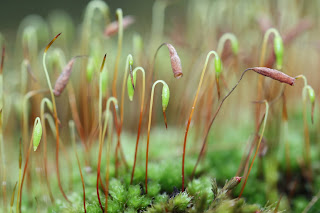I hung
around the smaller lake for an hour and a half, the cold eventually seeping
through my layers. I thought at one
point that I has spotted the rails in the reeds, but distance, position and
light combined to make me uncertain. My
plan to walk further came to nothing although on the positive side I did meet
two or three old friends I had not seen for some time and so enjoyed a
chat. No one was picking up Water
Rails. I kept on the move partly to keep
at least some warmth and partly to give different angles of view. I did notice that now the lakes had become
unfrozen the numbers of Goosanders had increased, but there were still
fewer birds about than would be expected at this time of year. I decided to give up and make home for a hot
drink. I took one last look, and low and
behold, had a decent sighting of Water Rail walking out in the open
before disappearing into the reeds again.
I decided that one Water Rail was enough and made for home. I remembered the Water Rail I found in
Jesmond Dene some years ago in the height of a very cold winter. It was the first one recorded in the dene for
almost 100 years!
My next trip
out (lockdown will ensure that the patch sees more of me than usual) was made
to the area surrounding the village, which I had intended to visit
previously. It was much milder today and
the area was waterlogged. I negotiated
pools of water and a pathway which had changed to a running stream, but sadly
saw extraordinarily little in the way of birds.
Conditions ensured I had the place to myself and I felt better for the
walk as I took in the view across the fields in changing winter light and
passing cloud formations. I did find
three sapling Horse Chestnut Trees in a line of hedge after I had carefully
watched a Mistle Thrush slowly and methodically searching an area of the
field.
Today,
another milder, but rather grey day, I met up with Sam and we slowly wandered
patch for two and a half hours. In the
main it was trees we were looking for so we began in the church grounds. There is a Yew and an Irish Yew in there
which are always worth checking out for Goldcrest. There were once again few birds at all today. I had not previously taken in the numbers of
European Aspen growing here and several that appear to be self-setting Aspens
are on the outside of the grounds too.
The root of one of the older trees was growing along and into the wall
resulting in some substantial damage. I
was reminded of the poem of Edward Thomas, Aspens. Perhaps not so surprisingly because Aspen are
a food source for Ladybirds, Sam got his eye on a cluster of hibernating
Ladybirds on the under-edge of a gravestone.
I have taken
quite an interest in the European Aspen Populus tremula. On the bark of the tree, diamond shaped
lenticels function as pores which allow for the passage of gasses between tree
and atmosphere. The shape of lenticels is one of the
characteristics used for the identification of species of tree e.g., the dark
horizontal lines on birch are lenticels.
Aspens will often produce clones of themselves by root sprouts that can
appear up to 40m away from the parent tree.
If the parent tree dies these clones can still be produced many years
afterwards.
We identified many species of tree as we continued our walk including several Horse Chestnut and later at least two Sweet (Spanish) Chestnut. The name Spanish derives from the fact not that the trees are of Spanish origin, but because the deep swirling bark markings are mindful of flamenco dancers. We were wondering if the Spanish Chestnuts could have been part of the Avenue of trees which once led from Killingworth House which was demolished in the 1950s. More research required here I think. The three trees that Sam confirmed were part of the Avenue are the large old Beech, Horse Chestnut and Sycamore in what is now parkland.









No comments:
Post a Comment